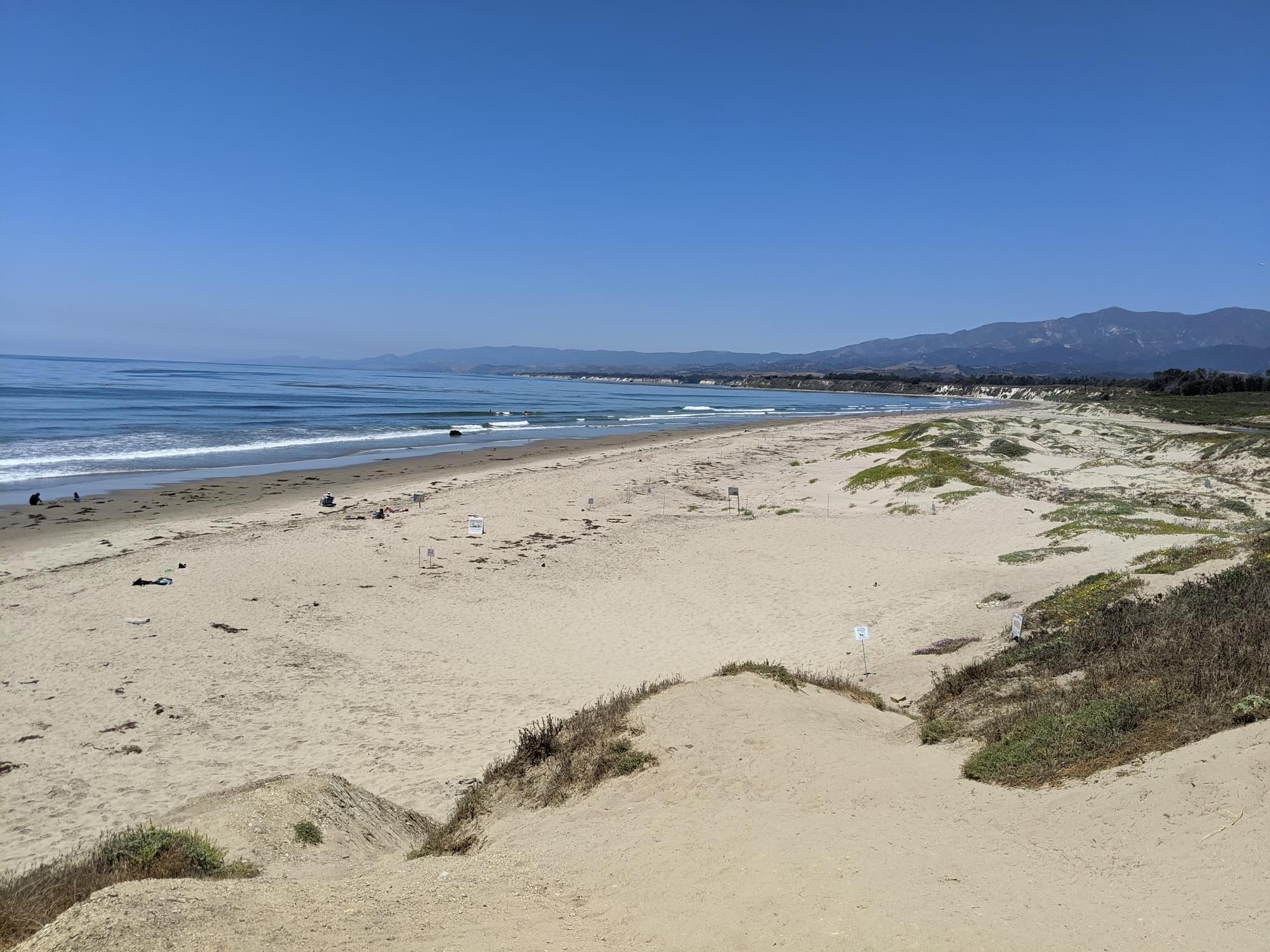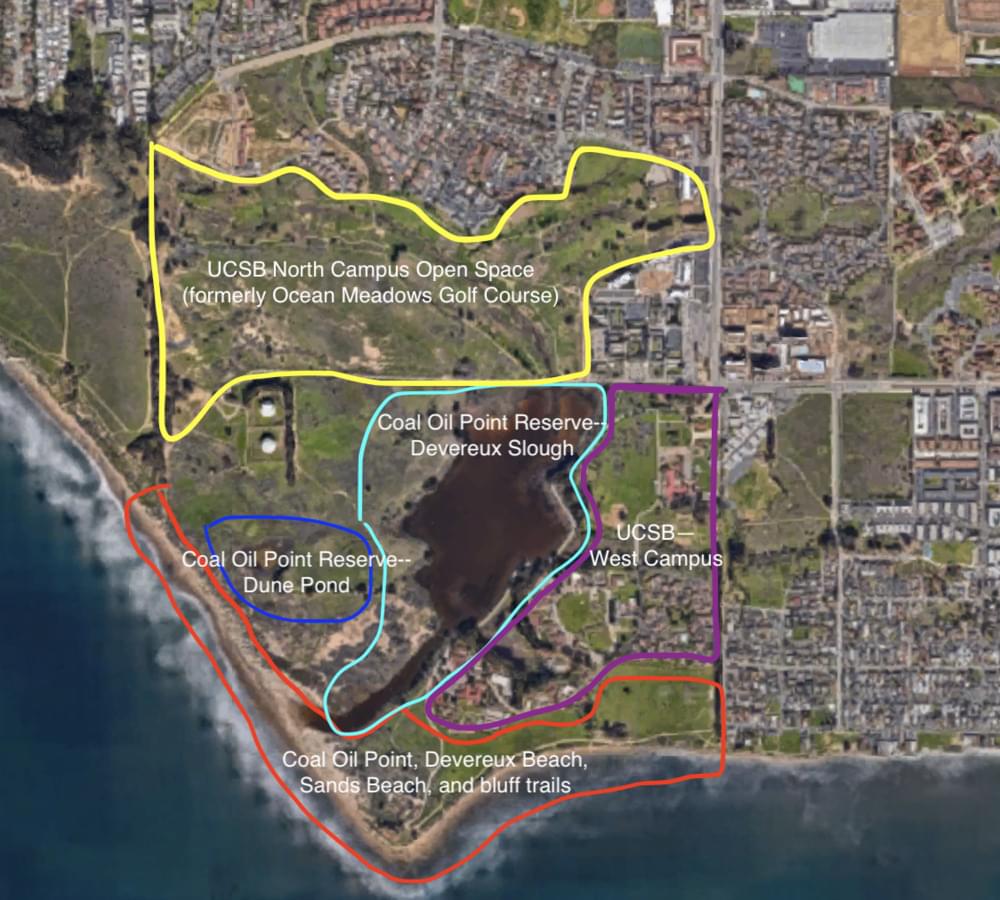Coal Oil Point, Devereux Beach, Sands Beach, and bluff trails

Coal Oil Point, Devereux Beach, Sands Beach, and bluff trails
Isla Vista, California 93117
Coal Oil Point ReserveNorth Campus Open Space
About Devereux Slough Complex
See all hotspots at Devereux Slough Complex
Devereux Slough was once a larger and deeper estuarine wetland covering much of COPR and NCOS, with a permanent channel connected to Goleta Slough through what is now Isla Vista. It is fed by inputs from Devereux Creek (flowing through the Eucalyptus line in Ellwood Mesa), Phelps Creek (from the north, in the "North Parcel" restoration area), Whittier Channel (just west of the Whittier Parking Lot), and an eastern unnamed tributary.
In the 1861 water year, overgrazing combined with massive rainfall led to enormous sediment deposits in the Slough and turned it from a deep estuary into a salt marsh. During the 1960s, the northern portion of the Slough was artificially filled in to build Ocean Meadows Golf Coarse, which closed in 2013.
Now, the Slough alternates between tidal saltwater and pooling fresh or brackish water depending on the season. During most of the year, a sand berm where the Slough connects to Sands Beach prevents water from flowing into or out of the Slough. As the Slough fills with water during winter rains, it eventually breaks through the berm and empties into the ocean. For a period of several weeks it becomes tidal until the berm is reformed. From that point on, the Slough continues to fill until either it breaches again, or the rain stops for summer. During summer, the water in the Slough gradually evaporates, which causes the channel to become narrower and more saline. The process then repeats when winter rains return.
The southern portion of the Slough was named Coal Oil Point Reserve and incorporated into the University of California Natural Reserve System in 1970. Numerous University of California research projects have taken place at COPR over the last five decades. Active weeding programs use teams of volunteers and paid staff to maintain the natural grassland and scrub communities.
In 2017, UCSB's Cheadle Center for Biodiversity and Ecological Restoration purchased the former golf course to create a restoration site now known as North Campus Open Space. Restoration began in 2017 with substantial ground-moving efforts designed to produce salt marsh habitat that will be resilient to sea level change. The project is now nearing completion, and active restoration work on site will likely gradually slow over time.
Free parking is available for NCOS off of Whittier (34.4222, -119.8713). Parking is also available on COPR at (34.410822, -119.876781), but requires a UCSB parking permit or a day pass (paid at meters on site). Free street parking is available on Camino Majorca in western Isla Vista, which provides foot or bike access to COPR via the West Campus Bluffs Trails. A public portapotty is available by Coal Oil Point at (34.407781, -119.878912)
Content from Conor McMahon, The Past, Present, and Future Hydrology of Devereux Slough, Coal Oil Point Reserve, North Campus Open Space, and Conor McMahon
 Devereux Slough Complex
Devereux Slough ComplexGoogle Maps; Linus Blomqvist